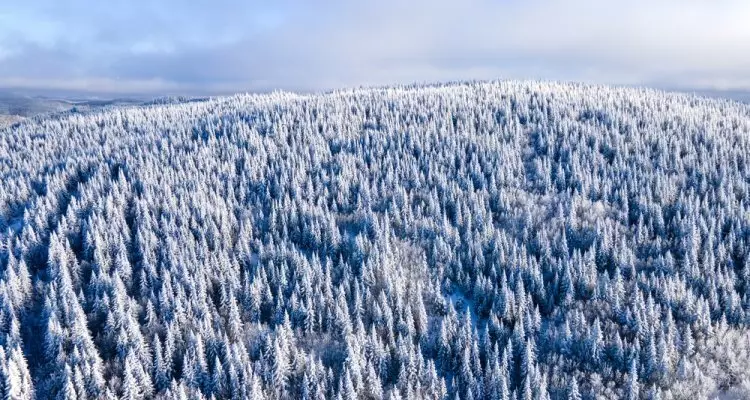Boreal forests in North America are shifting northwards due to climate change. The shift is happening faster at the southern boreal boundaries than the northern ones, indicating that boreal forests are contracting on a continental scale. An international study led by Wageningen University & Research used 20 years of tree cover data from satellites to observe how boreal forests in North America are changing.
Mismatch of Rates
Boreal forests are expected to move northward due to climate warming as trees may be able to grow into areas that were previously too cold for them. However, the climate may become too warm and dry in the southern parts of the boreal forest distribution. The rates at which these two processes happen are key, and the southern boreal may lose trees much faster than the northern boreal gains trees through expansion. Such a mismatch would indicate a contraction of the biome.
Impact of Disturbances
The research team used 20 years of tree cover data from satellites across the North American boreal biome to observe the change in tree cover along a south-to-north gradient. Over this period, forests became denser in the central boreal and thinner in the southern boreal. The researchers found a mismatch between high tree cover losses in the south and low tree cover gains in the north. Both fire and timber logging amplified tree cover losses more significantly in the southern boreal, where forests are already stressed due to warming.
Global Importance of Boreal Forests
Boreal forests are crucial as they store large amounts of carbon in the biomass of trees and in the soil. A long-term contraction of the biome may release a part of this carbon pool, which could further increase global warming. Warmer temperatures will increase forest fires and insect outbreaks, intensifying the loss of forests in today’s southern ranges. Knowledge about the future health of boreal forests could help to anticipate the impacts of forest changes on global climate.
Boreal forests are sentinels of change, and their shift northwards highlights the urgent need for long-term monitoring, particularly at the edges of our major forest ecosystems. The study underscores the importance of taking action to combat climate change and protect the world’s forests.


Leave a Reply